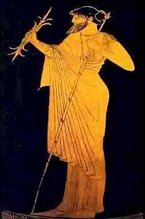Facts About Your Coin Metals
Gold
Gold was the second metal to be discovered and worked by man. Copper was the first.
If all the gold ever found (approx. 20,000 tons) were cast into a single ingot, it would form a 20-yard cube.
Gold is the most ductile of all metals. One ounce can be pulled into a wire 27 miles long.
Silver
In ancient times silver was know as argentum and was considered to be more precious than gold because it appeared less commonly in nature than gold.
Pure silver is too soft for most uses and is most often alloyed. Copper is most commonly mixed with silver as an alloy because it strengthens without discoloring.
Most coin silver contains 10 to 20% copper.
Sterling is the most commonly used alloy and was adopted as a standard under King Henry II of England in the 12th century.
Copper
Copper is one of the most versatile of all metals and is relatively abundant.
It is thought copper was the first metal put to use by our ancestors.
In 6000BC the Egyptians used copper weapons. In 2750 BC the Egyptians made copper pipes.
The term verdigris comes from the Old French for “Green of Greece,” a reference to metal sculptures of antiquity.
Verdigris consists of acetates, sulfates, and chlorides and are very is very poisonous
Bronze
Bronze is an alloy of copper and tin.
Bronze is much tougher than its parent metal, copper and is also much easier to melt.
Bell metal is so named because of the tone rendered when struck and contains as between 14 and 25% tin.
Statuary bronze might have as little as 10% tin and in bearings or weapons zinc is often added for strength.
Billon
The term billon come from the middle Latin billo, meaning a “coin containing mostly copper.”
Billon is an alloy of a precious metal such as silver but on occasion one finds gold is used in the alloy.
The majority of the alloy of billon is copper and is used primarily for the making of medals, coin and tokens.
I hope you have enjoyed our little exercise in getting to know something about our coin metals. Thanks you for reading and please send feedback. Many of my facts came from my book “The Complete Metalsmith” by Tim McCreight. My gratitute.
Gold
Gold was the second metal to be discovered and worked by man. Copper was the first.
If all the gold ever found (approx. 20,000 tons) were cast into a single ingot, it would form a 20-yard cube.
Gold is the most ductile of all metals. One ounce can be pulled into a wire 27 miles long.
Silver
In ancient times silver was know as argentum and was considered to be more precious than gold because it appeared less commonly in nature than gold.
Pure silver is too soft for most uses and is most often alloyed. Copper is most commonly mixed with silver as an alloy because it strengthens without discoloring.
Most coin silver contains 10 to 20% copper.
Sterling is the most commonly used alloy and was adopted as a standard under King Henry II of England in the 12th century.
Copper
Copper is one of the most versatile of all metals and is relatively abundant.
It is thought copper was the first metal put to use by our ancestors.
In 6000BC the Egyptians used copper weapons. In 2750 BC the Egyptians made copper pipes.
The term verdigris comes from the Old French for “Green of Greece,” a reference to metal sculptures of antiquity.
Verdigris consists of acetates, sulfates, and chlorides and are very is very poisonous
Bronze
Bronze is an alloy of copper and tin.
Bronze is much tougher than its parent metal, copper and is also much easier to melt.
Bell metal is so named because of the tone rendered when struck and contains as between 14 and 25% tin.
Statuary bronze might have as little as 10% tin and in bearings or weapons zinc is often added for strength.
Billon
The term billon come from the middle Latin billo, meaning a “coin containing mostly copper.”
Billon is an alloy of a precious metal such as silver but on occasion one finds gold is used in the alloy.
The majority of the alloy of billon is copper and is used primarily for the making of medals, coin and tokens.
I hope you have enjoyed our little exercise in getting to know something about our coin metals. Thanks you for reading and please send feedback. Many of my facts came from my book “The Complete Metalsmith” by Tim McCreight. My gratitute.

2 comments:
Jerry, I'm looking into this ancient AR info. I'm reading that it has to do with ancient Greek mines, that were exhausted. I have saved the link, and will forward it to AP. I believe Alexander The Great, brought back alot of AR from Persia though. I'll be back...Shay.
A nice concise summary. Where does Potin fit into this scheme?... Kernos
Post a Comment